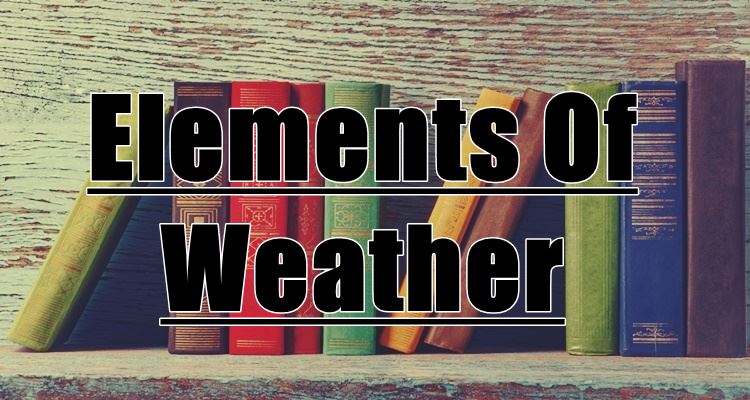Here are the 8 elements of weather. Check it out below!
8 ELEMENTS OF WEATHER – Identifying and understanding the various elements of weather as observed by meteorologists.
Rain and dull clouds, windy blue skies, cold snow, and sticky heat are the different types of weather. The weather is changing constantly over minutes, hours, days, and weeks and the word weather is being defined as “the state of the atmosphere for a short period of time”.

Weather happens in the troposphere, the closest part of the Earth’s atmosphere to the ground. Meteorologists use instruments such as weather satellites and Doppler radar to predict the weather. Through technology, we are now able to have better and more complete forecasts.
Here are its 8 elements:
- Temperature
People are sensitive to temperature. We can easily distinguish if it’s getting hot or getting cold. The thermometer is used to measure temperature – the measurement of the amount of kinetic energy present in the air. It can manifest physically through being hot or cold. - Air (Atmospheric) Pressure
This is one essential element because it makes a significant role in making accurate weather forecasts. This is the measure of the air weight in the atmosphere. The barometer is used to measure air pressure. - Wind (Speed & Direction)
Wind can signal cold & warm fronts, clouds, thunderstorms, and hurricanes. The speed of the wind is the distance between the low-pressure and high-pressure areas. Anemometer is used by experts to measure this. - Humidity
This the elements that we cannot see but we can absolutely see. This refers to the amount of vapor in the atmosphere at a specific time. - Precipitation
This is the process necessary to replenish forms of water – dams, rivers, reservoirs, and groundwater. It can cause rain, snow, hail, or graupel. A rain gauge is an instrument used to measure rainfall. - Visibility
This is the degree to which an object can be observed at a distance. What can affect visibility are conditions like mist, haze, fog, and freezing drizzle. The forward scatter center is one instrument that can measure this. - Clouds (Type & Cover)
Clouds have certain types and they are being studied through weather satellites and radars. This instrument can measure cloud density, the amount of moisture, the temperature, and the movement of the clouds with accuracy. - Sunshine Duration
This refers to the amount of time the Earth is exposed to solar radiation. Campbell–Stokes recorder is one type of sunshine recorder that can measure sunshine duration.
READ ALSO:
- Pormal Na Edukasyon – Mga Dapat Mong Malaman Tungkol Dito
- Sentence Outline – What Is A Sentence Outline, Here’s An Example
What can you say about this? Let us know!
For more news and updates, follow us on Twitter:@philnews_ph Facebook: @PhilNews and; YouTube channel Philnews Ph.
